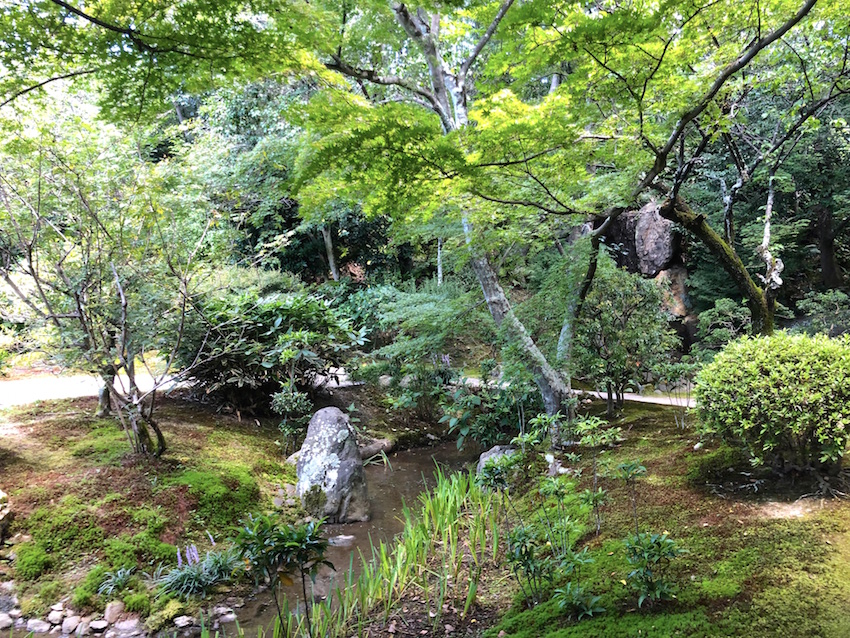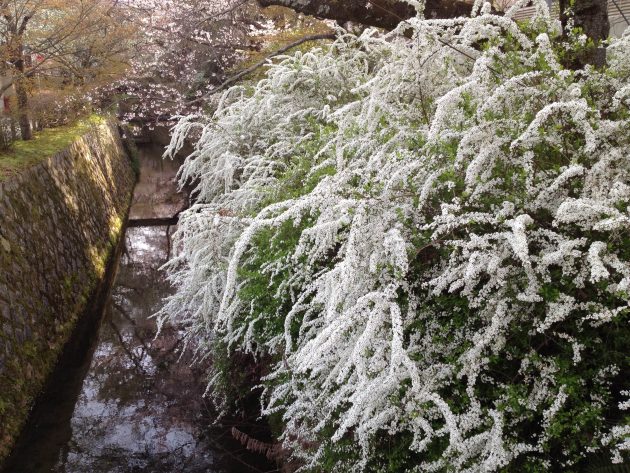
호콘고인 사원 정원이란
율종 도쇼다이지(東照大寺) 소속 사찰인 고이산 호콘고인(後井山寶金孝院)에 1100년대경 조성된 정토식 정원(불교 정토를 표현한)이 국가 특별 명승으로 지정되었습니다. 7월이면 연못에 만발하는 연꽃으로도 유명한 이 "연꽃 사원"은 간사이 지역 "꽃의 사원" 중 13위에 랭크되어 있습니다.
2019년 여름, 약 5년 만에 처음으로 그곳을 방문했습니다! (그때는 연꽃이 몇 송이만 남아 있었죠.)
호콘고인의 오랜 역사는 830년경으로 거슬러 올라갑니다. 우대신(우다이진) 기요하라노 나쓰노는 794년경 이곳에 산장을 두었습니다. 그의 사후, 이 산장은 나라비가오카데라(당시 닌묘 천황이 고이산이라고 명명한 산)가 되었습니다. 그 후 858년, 몬토쿠 천황이 더 많은 당과 건물을 증축하여 이름을 테난지(天安寺)로 바꾸었습니다. 1130년에는 고시라카와 천황의 어머니이자 도바 천황의 황후였던 다이켄몬인이 이곳을 호콘고인으로 재건했습니다.
그 복원과 관련하여, 타이케몬인은 중앙 연못을 중심으로 치센카이유(治仙回遊) 양식으로 설계된 이 정토 정원을 조성하도록 명령했습니다. 두 번 방문했을 때 정원을 가득 채운 연꽃 때문에 저는 정원의 치센카이유 디자인을 완전히 이해할 수 없었지만... 정원 뒤편에 있는 세이조노타키(清条の滝)는 일본에서 가장 오래된 인공 폭포로 알려져 있으며, 린켄(林健)과 조이(浄井) 스님이 거대한 돌을 일렬로 세워 조성했습니다. 오늘날까지 누가 원했고 누가 만들었는지 정확히 알 수 있는 흔적이 남아 있는 사적지로서, 이 정원은 귀중한 보물입니다. 이러한 이유로 호콘고인(宝金剛院)의 세이조노타키는 고이산(五井山)과 함께 국가 특별 명승으로 지정되었습니다.
현재의 정원은 1960년대에서 1970년대에 걸쳐 발굴 및 복원되었습니다. 전쟁과 자연재해의 혼란으로 인해 지금은 전성기보다 규모가 작고 건물도 적어 보입니다. 그럼에도 불구하고, 1600년대에 복원된 사제관과 예배당이 연못을 바라보는 풍경은 아름답습니다.
이 정원에는 700년대 후반부터 1300년대 중반까지 국가 지정 중요문화재가 여러 점 있습니다. 정원의 중심인 아미타불 좌상을 시작으로 십일면관세음보살, 승려의 모습을 한 문수보살상, 그리고 죽은 자식을 수호하는 지장보살상도 볼 수 있습니다. 연꽃과 함께 연못 주변에는 아름답고 푸른 단풍나무도 있어, 가을에 단풍을 보러 꼭 한번 와 보고 싶습니다!
(저는 2014년 7월과 2019년 8월에 방문했습니다. 아래 정보는 제가 방문한 날짜를 기준으로 합니다. 최신 정보는 해당 공식 웹사이트를 확인하시기 바랍니다.)
꽃이 만발한 절정의 이미지



























